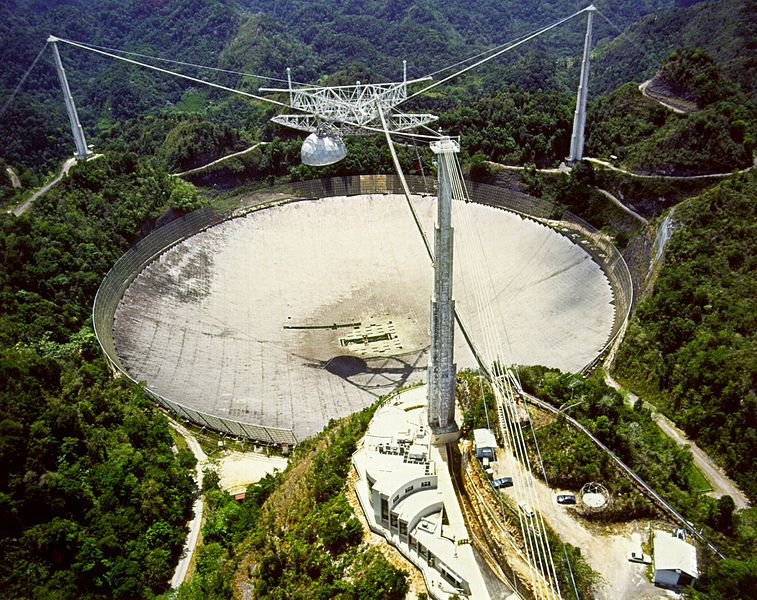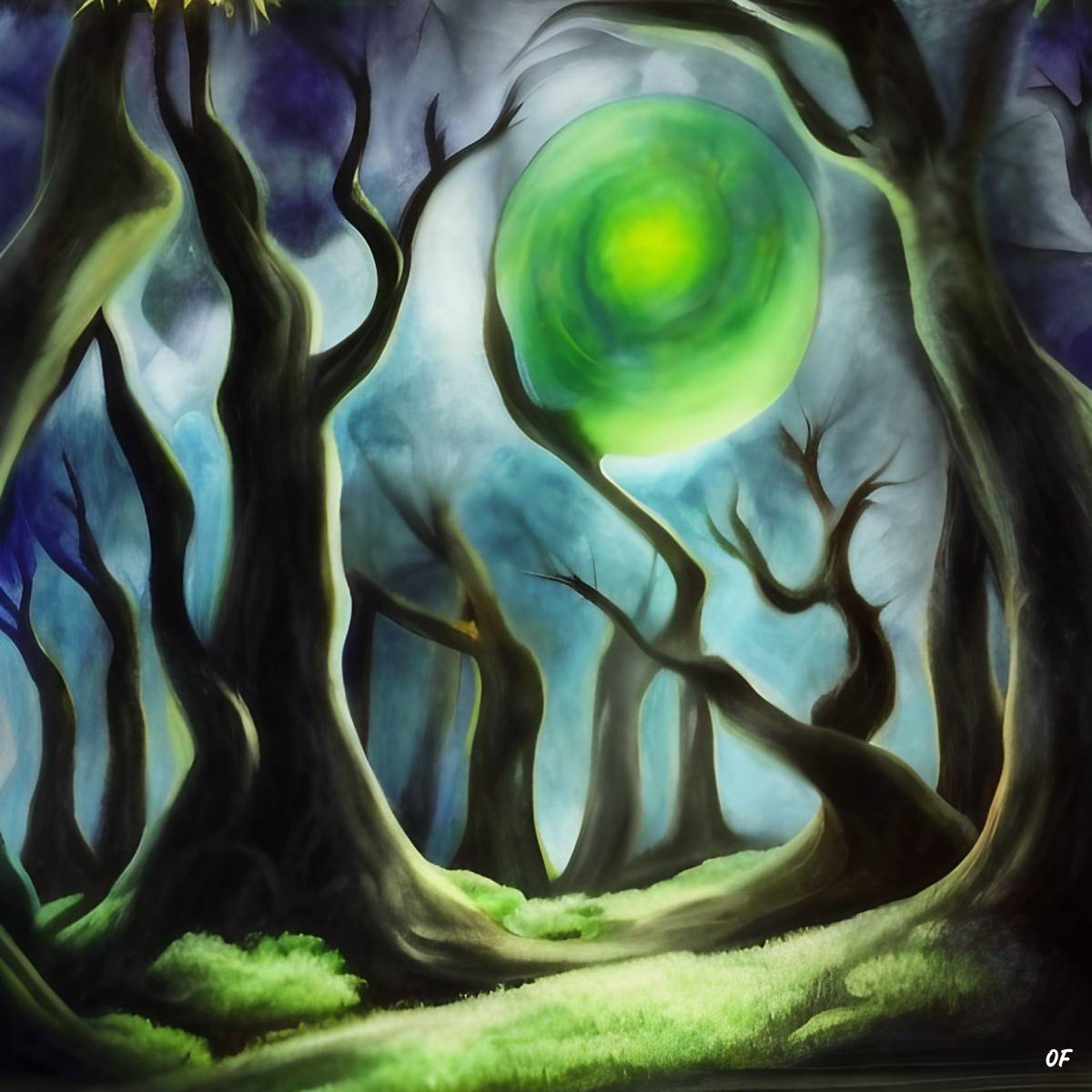Science fiction abounds with tales of alien encounters. In stories of an optimistic bent, like Star Trek and E.T. the Extraterrestrial, we see humanity interacting peacefully with other species in the cosmos, forming friendships and even political alliances. More pessimistic fiction, like H.G. Wells’ classic The War of the Worlds, posits that aliens would seek to conquer our planet and seize its resources for themselves. But what if the truth is something different—and more terrifying?
The Dark Forest Theory is a thought experiment about the behavior of extraterrestrial intelligence. It posits that alien civilizations really are out there, hidden throughout the galaxy—and if they ever learn of our existence, they will do everything they can to kill us, driven solely by the grim logic of self-preservation.
Where is everybody?
To understand the Dark Forest Theory, we must first examine the Fermi paradox, also known as the Great Silence. In the 1950s, physicist Enrico Fermi asked a simple but famous question: “Where is everybody?” What bothered him was the lack of evidence of alien intelligence, despite the immense size and age of the universe. Our galaxy is billions of years old, with hundreds of billions of stars, and even if only a fraction of planets can support intelligent life, there must be thousands of them. The vast distances between stars would be little impediment to colonization; by founding an initial handful of colonies, which, after many millennia, would grow to launch their own expeditions, an alien civilization could achieve exponential growth, and settle the entire Milky Way within a few million years. On a cosmic scale, that’s the blink of an eye. So by now, we would expect a galaxy teeming with civilizations, whose radio transmissions would fill the airwaves wherever we looked.

And yet—silence. Aside from questionable reports of UFOs, we have no compelling evidence that aliens exist on Earth or in the wider universe. We haven’t picked up radio signals from nearby stars beside the chatter of natural stellar activity. The other worlds in our solar system are as pristine as they were when they formed, with no trace of visitors at any time over the long eons. As far as we can tell, we appear to be all alone, the only sentient beings in a cold and benighted cosmos.
Resolving the paradox
In the face of an empty universe, people have floated numerous explanations for the absence of other civilizations. Some say that intelligent life is so astronomically rare and dependent on a long string of lucky breaks that we really are alone. Others claim that civilizations surround us, but they have decided to isolate Earth as some kind of zoo or a nature preserve. It’s also possible that aliens communicate in ways we can’t detect, have no interest in interstellar travel, or inevitably self-destruct through nuclear war or climate change.
This is where the Dark Forest Theory comes in. Out of all the solutions to the Fermi paradox, it is by far the most ominous—if it’s true, we are in danger of destruction at this very moment.
The Dark Forest
The term “Dark Forest Theory” comes from the 2008 novel The Dark Forest, by acclaimed Chinese sci-fi author Cixin Liu. Here’s an excerpt from Liu’s novel, explaining the underlying philosophical principles:
The universe is a dark forest. Every civilization is an armed hunter stalking through the trees like a ghost, gently pushing aside branches that block the path and trying to tread without sound. Even breathing is done with care. The hunter has to be careful, because everywhere in the forest are stealthy hunters like him. If he finds another life—another hunter, angel, or a demon, a delicate infant to tottering old man, a fairy or demigod—there’s only one thing he can do: open fire and eliminate them.
This is not exactly Star Trek. This is a dangerous, hypercompetitive universe, where you can only guarantee your own existence by eliminating potential rivals. And in turn, you must stay silent, hiding in the vast sprawl of the galaxy, lest an older, more advanced civilization catches you in its unforgiving gaze.
Liu bases this grim argument on a few key assumptions:
- All extraterrestrial civilizations are fundamentally motivated by self-interest, not altruism. The most important objective is survival.
- You cannot truly know the intentions of other lifeforms, who may be light-years away, and incomprehensibly different from yourself. Thus, you cannot trust them.
- All intelligent life is capable of advancing to the point where it may pose a threat to your existence.
Granting all those conditions, a species wishing to stay alive must actively eliminate any potential rivals, as soon as it becomes aware of them. You must keep yourself from being discovered in a universe filled with alien life. Thus, the only rational move is to hunker down, under strict radio silence, and wait out the long, hostile cosmic night—even as you blast any upstart neighbors foolish enough to announce themselves.

The Killing Star
Another take on the Dark Forest Theory—though not under that name—can be found in the 1995 hard science fiction novel The Killing Star, by authors Charles Pellegrino and George Zebrowski. The key event of this book is an alien first strike against the human species, sometime in the near future. Without warning, missiles fly into the solar system from parts unknown, hitting Earth at 99 percent the speed of light—fast enough for a kilogram of matter to be more powerful than the largest nuclear bomb ever created. In an instant, the human race is all but wiped out; only a few scattered survivors remain, utterly bewildered by what has happened to them—and unprepared to face the alien invasion fleet that has come to finish the job.

What explains this sudden act of aggression? The aliens’ motives are quite similar to those Cixin Liu spells out: security and survival. The novel states that, in the years before the attack, humanity built antimatter-powered rockets for high-speed interstellar exploration—unaware that such rockets, bright enough to be seen for light-years all around, would be indistinguishable from missiles. According to Pellegrino and Zebrowski, this is the key threshold; upon seeing that a species possesses the means of interstellar travel and warfare, no neighboring civilization can afford to assume good intentions. The only rational option is to attack.
The survival imperative
We can see, now, the logic at work here. Under the Dark Forest Theory, the universe is governed by preemptive warfare’s cold, brutal necessity—you must take out the other species before it can do the same to you. Peace is impossible because there is no means of enforcement; your neighbor is an incomprehensible alien species, light-years away, so you can’t guarantee that they aren’t massing for a sneak attack. From their perspective, you are just as threatening.
However, it would be a mistake to attribute this state of affairs to malice. The other civilizations are not evil and need not hold any ill will towards humanity. Under the Dark Forest Theory, however, everybody is subject to the same passionless logic, trapping the entire Milky Way in a never-ending game of hide-and-seek. The stakes could not be higher.
Keeping quiet
Over the past few decades, writers have speculated at length about the implications of alien life, hoping to solve the Fermi paradox and determine something about our place in this vast, mysterious universe. The Dark Forest hypothesis is one of the bleaker ideas to come out of this quest; as theorized by Cixin Liu, and the authors of The Killing Star before him, we may have to contend not with a welcoming galactic community, but with encirclement by older, far more advanced civilizations, who view our very existence as a threat.

Of course, it’s just a theory. We are only speculating about the motivations of thus-far hypothetical extraterrestrial intelligence. It could be that interstellar travel is beyond the reach of any civilization, and there would be no means for aliens to attack us, or for us to threaten them. It’s also possible that intelligent life is much rarer than we think; in a galaxy with only a handful of spacefaring species, everyone would remain essentially isolated by the vast distances between them.
Consider this, however: we have been broadcasting signals into space since the invention of the radio in the late nineteenth century. By now, our transmissions are visible to everyone within a sphere almost 130 light-years in radius. The density of stars in our part of the galaxy is 0.004 stars per cubic light-year; this means that more than 36,000 star systems have already received direct proof of our existence and location. How many of them contain life? How many contain other civilizations, watching us? Will they view our pop radio and TV reruns as a harmless diversion or a challenge from a fast-developing—and dangerous—galactic rival?
Caution may be called for. As we search the universe for alien life, we should hope it doesn’t find us first.


